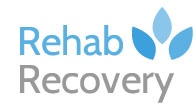
A Parent's Guide to Eating Disorders
March 6, 2015—One of the toughest things a parent may ever have to face is being told their child has an eating disorder. Feelings of guilt can make us wonder whether we could have done things differently in the past, while the health and wellbeing of our child becomes our biggest fear for the future.
Science has helped us glean vital information about the nature of eating disorders. First, nobody is to blame; eating disorders can arise from a host of sources, including genetics and other co-existing illnesses. If your child or family members has just been diagnosed, it's important to immerse yourself in research, find help from doctors, nutritionists and therapists, and—above all—to provide unconditional support. Evidence-based treatments such as Maudsley Family Therapy are showing how important it is for the whole family to join their loved one in battling one of the most common disorders in America.
What Is an Eating Disorder?
An eating disorder is actually a mental illness, according to the American Psychiatric Association. Eating disorders sometimes occur in individuals who have other mental illnesses, such as anxiety or depression. There are different types of eating disorders, including anorexia nervosa, binge eating and bulimia nervosa.
An individual who suffers from anorexia becomes obsessed with losing weight. The sufferer often develops unusual eating habits that result in a low intake of calories and nutrition. An individual who suffers from bulimia secretly binges, taking in a large amount of food at one time. The bulimic then uses diuretics, laxatives or induced vomiting to purge the body. A bulimic individual usually is a normal weight or even slightly overweight, making it difficult for family members to realize that something is wrong. An individual suffering from binge eating disorder often eats large amounts of food, similar to someone with bulimia, but a binge eater does not purge after eating. This individual may suffer from obesity as a result of the excessive food intake.
Who Suffers from Eating Disorders?
Individuals my develop eating disorders at any age, even as young children. Up to 7 percent of American females suffer from bulimia at some point in life, according to the National Eating Disorders Association. Patients who suffer from anorexia usually do so after they go through puberty, and the average age for the onset of the disorder is 17, according to the Association.
Eating disorders affect both males and females, although the signs often present in different ways. Female patients tend to focus on losing weight, while males usually concentrate on improving muscle mass.
Recognizing the Need for Help
Some signs, such as rapid weight loss, point rather obviously to an eating disorder, while other symptoms are harder to recognize. Look for signs that someone attempts to avoid eating with the family or in public. Be aware of whether your family member participates in extreme workout regimens, sticking to the exercise plan regardless of illness or weather. Individuals with bulimia sometimes have fluid retention or marks on their hands caused by induced vomiting.
Outpatient Treatment vs. Inpatient Treatment
outpatient careOnce a doctor diagnoses your family member with an eating disorder, a treatment plan is developed based on the individual’s medical stability. Psychotherapy is a large component of the treatment plan, but a patient must be at a safe weight before therapy begins. Patients who are not at a safe weight, typically those with anorexia, usually must enter an inpatient treatment program where caloric intake is controlled. Patients who do not need around-the-clock inpatient care may benefit from intensive outpatient programs that monitor individuals for several hours in the daytime or evening. It’s important to have a strong support system in place if you are undergoing outpatient care.
Patients who are treated at residential facilities or through outpatient programs sometimes take medication to assist in their recovery. Because eating disorders often are associated with other types of mental illnesses, antidepressants are often prescribed to address depression or anxiety. Medication should only be taken under the supervision of a medical professional.
Psychotherapy
Cognitive behavioral therapy is a common method of psychotherapy for treating eating disorders, according to the National Eating Disorders Association. The therapy involves three phases. During the first phase, patients learn about the damage that results from eating disorders. The second phase focuses on regular eating habits, and the final phase concentrates on strategies to avoid a relapse.
Family Therapy
Everyone in a family is affected when a loved one suffers from an eating disorder. Psychotherapy is available for family members who wish to learn how to communicate and interact with someone who suffers from an eating disorder. Family members also may participate in mealtime therapy, where patients learn to eat healthy meals in a calm setting.
The Maudsley Approach is an outpatient program for young patients who are under their parents’ care. This method is a three-step program that starts by increasing parental control of the child’s eating patterns. Once the child is able to make healthy eating choices independently, the program focuses on addressing future development, which may be impaired due to the effects of the eating disorder. This method of treatment lasts about a year, according to the Maudsley Parents organization.
Recovery Timeline
Patients who have anorexia and are medically stable enough to avoid inpatient treatment should participate in outpatient treatment and monitoring for at least six months, according to the National Eating Disorder Association. Patients who must be hospitalized to stabilize their weight should participate in therapy and monitoring for at least a year following their release from the hospital, according to the Association. Individuals who suffer from bulimia usually participate in therapy for up to five months.
Recovery and Relapse
Individuals with bulimia are more likely to experience a full recovery than those with anorexia, according to a long-term study published in the Journal of the American Academy of Child and Adolescent Psychiatry. The study reviews the records of patients for 7.5 years after their diagnoses. One-third of patients with anorexia are fully recovered at the 7.5-year mark, while nearly three-quarters of patients with bulimia are fully recovered. A high suicide rate also is associated with patients who suffer from bulimia, according to the National Eating Disorders Association.
RELATED LINKS:
The American Psychological Association notes that almost everyone worries about their weight occasionally, however, people with eating disorders take such concerns to extremes. Therapy can help restore a healthy attitude toward eating.

